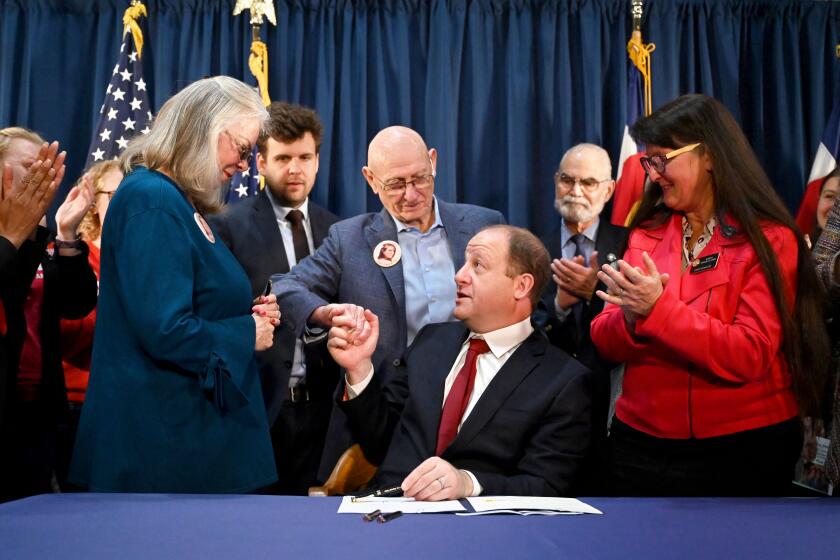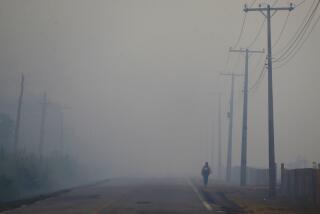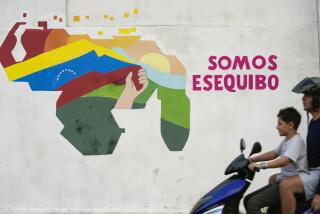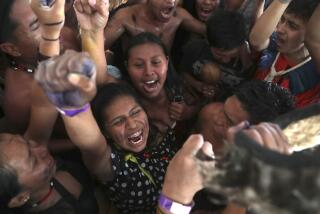Brazil’s Lula resumes recognition of Indigenous land areas
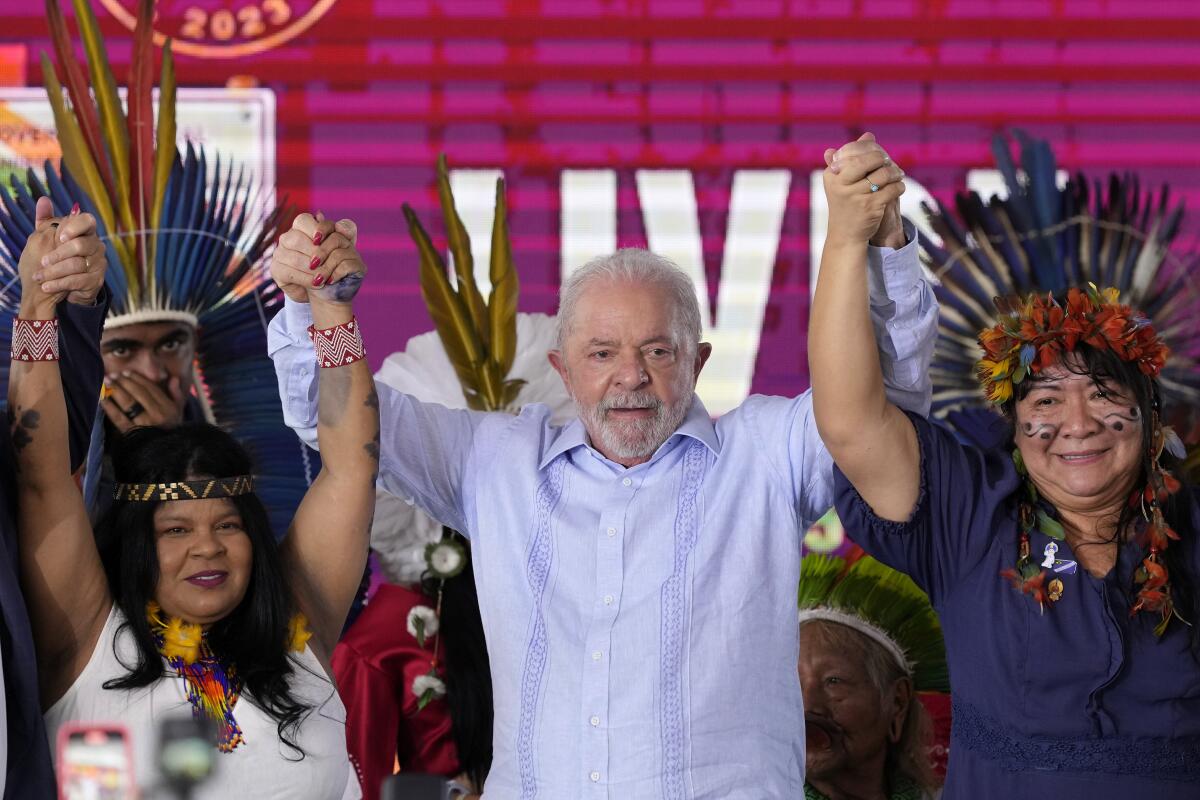
- Share via
BRASÍLIA, Brazil — Brazil President Luiz Inácio Lula da Silva on Friday granted official recognition of nearly 800 square miles of Indigenous lands, following through on a campaign promise in a move that also protects critical Amazon rainforest from commercial exploitation.
Lula recognized six ancestral lands, with the largest two in the Amazon, the world’s largest tropical forest and an important carbon sink that helps moderate climate change.
The land remains under the federal government’s jurisdiction, but the designation grants Indigenous peoples the right to use it in their traditional manner. Mining activities are prohibited, and commercial farming and logging require specific authorizations. Additionally, non-Indigenous individuals are forbidden from engaging in any economic activity on Indigenous lands.
Colorado’s governor has signed four gun control bills months five months after a mass shooting at an LGBTQ+ nightclub.
Lula’s action was welcomed by the Indigenous movement, but not without some frustration that it was limited in size. In January, his government had pledged to create 14 new territories in the short term.
At an annual weeklong encampment of Indigenous people in capital Brasilia, Lula addressed a packed crowd that included workers from the federal government’s Indigenous affairs agency, who chanted and held banners during the ceremony. The encampment itself includes hundreds of tents on the city’s main esplanade with Indigenous people of various ethnicities, gathering to dance, sing, sell handicrafts and hold political demonstrations.
“We are going to legalize Indigenous lands. It is a process that takes a little while, because it has to go through many hands,” Lula said. “I don’t want any Indigenous territory to be left without demarcation during my government. That is the commitment I made to you.”
Kleber Karipuna, executive coordinator at Indigenous people’s organization Apib, called the demarcation a welcome shift after four years of threats and invasions targeting Indigenous territories under Lula’s predecessor Jair Bolsonaro.
“For us, it is a very significant process of restarting. Of course, there are still other lands that can be advanced,” he said.
Among lands that missed out was the Barra Velha territory of the Pataxó people in southern Bahia state. Renato Atxuab, a Pataxó leader, said “this government that we supported, that we helped build” must demarcate their land as soon as possible to prevent invasions by outsiders.
Already there are conflicts involving agribusiness and land-grabbers, he said, and drug traffickers have been moving in, too.
Atxuab said he has met with the Indigenous Peoples minister — a newly created position under Lula’s government — but has not been given any date for his land’s demarcation.
The largest new area is located in the Amazonas state. The Nadöb people’s Uneiuxi Indigenous Territory has been expanded by 37% to 2,100 square miles of primary rainforest. It is in a remote area — from the main village, it takes four days to travel to the closest city in a low-powered motor boat, the most common mode of transportation in the region.
“The demarcation will make the Nadöb people feel safe and protected within our territory. That is where we live, fish, hunt, and gather fruits. We want to continue there, like our ancestors,” chief Eduardo Castelo, 45, told the Associated Press in a phone interview. “We don’t want the impact of the whites on our territory.”
Indigenous demarcation had been halted since 2018 following Bolsonaro’s promise to the agribusiness sector, which opposes new Indigenous demarcations.
Studies have shown that Indigenous-controlled forests are the best preserved in the Brazilian Amazon. But deforestation grew by 195% between 2019 and 2021 in comparison with the four previous years, according to a recent study published in the journal Nature. This destruction has been largely caused by non-Indigenous people, from land-robbers to illegal miners.
The Amazon rainforest covers an area twice the size of India and is a crucial buffer against climate change as it absorbs a significant amount of carbon dioxide. But deforestation in Brazil, which holds two-thirds of the biome, has caused almost half of its carbon emissions. The eastern Amazon’s destruction is so extensive that it has now become a carbon source instead of a carbon sink for the Earth.
Lula, who beat Bolsonaro in the 2022 elections, vowed to resume land demarcations. His government also created the Ministry of Indigenous Peoples, responding to a demand from the grassroots movement.
More to Read
Sign up for Essential California
The most important California stories and recommendations in your inbox every morning.
You may occasionally receive promotional content from the Los Angeles Times.
